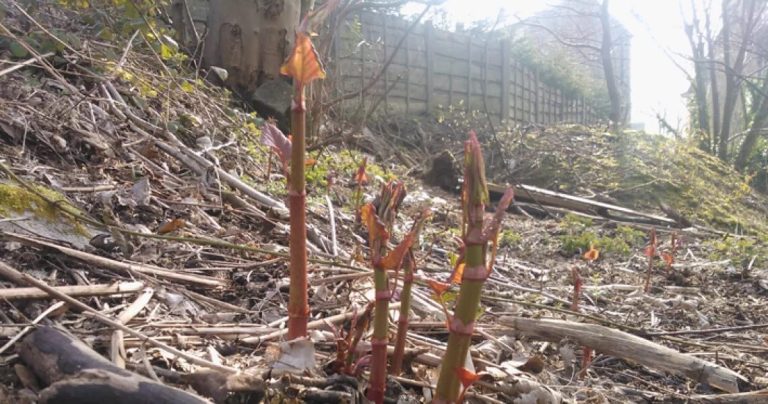
Blog
The railway Knotweed children
Author: Mike Clough
Date Posted: Thursday 23rd April 2015

0161 723 2000
8AM to 5PM

Author: Mike Clough
Date Posted: Thursday 23rd April 2015

Several years ago I found a strange looking plant on a site in Bolton near to the railway line, it looked like Japanese knotweed but also exhibited some of the characteristics of Polygonum baldschuanica (Russian vine – also known as the ‘mile a minute’).
I rang my contacts at the Environment Agency who weren’t particularly interested, then I rang DEFRA who simply said … ‘kill it, kill it now’.
I now suspect that this was Fallopia x conollyana – the ‘Railway Yard Knotweed’.
The first record of the plant was in Wales in 1983 as an open pollinated seed from F. japonica and subsequently confirmed by artificial hybridization the same year (Bailey and Conolly 1984). Whilst there was huge amounts of seed pollinated by F. baldschuanica on F. japonica plants it was not until 1987 that a plant of some considerable size was found in Haringey. Since that date there have not been any confirmed sightings of further hybrids as established plants in the Brirtish Isles – however there are increasing reports of the hybrid in continental Europe.
This hybrid between Fallopia japonica and F.baldschuanica has been known to exist in Britain as seed since 1983 and as an established plant since 1986. Over the past fifteen to twenty years there have been a number of reports of this hybrid from Europe both as open-pollinated seed on F. japonica plants and as established plants.
Technically Fallopia conollyana is an unlikely combination with its parents having contrasting growth forms and over winter strategies. F. japonica is a herbaceous perennial which stores reserves in underground stems or rhizomes whilst F. baldschuanica is a deciduous woody perennial that stores reserves in woody overground stems. Hence F. conollyana may fall between two camps in terms of resource portioning for over winter – which may be the reason for its failure to establish more generally in the British Isles.
Although huge amounts of seed are produced every year by F. Japonica throughout Europe bearing F. x conollyana embryos only a minute proportion of them seem ever to have germinated and become established naturally. It is theorised that for this to occur the following would be required;
A long warm Autumn – for maximum seed ripening
Followed by a cold winter – to stop the seed from rotting
Followed by a warm winter – for seedlings to survive the all-important first winter
Probably a rare thing in the UK – RARE BUT NOT IMPOSSIBLE!
Mike C
Ref : Fallopia x conollyana – J.P.Bailey